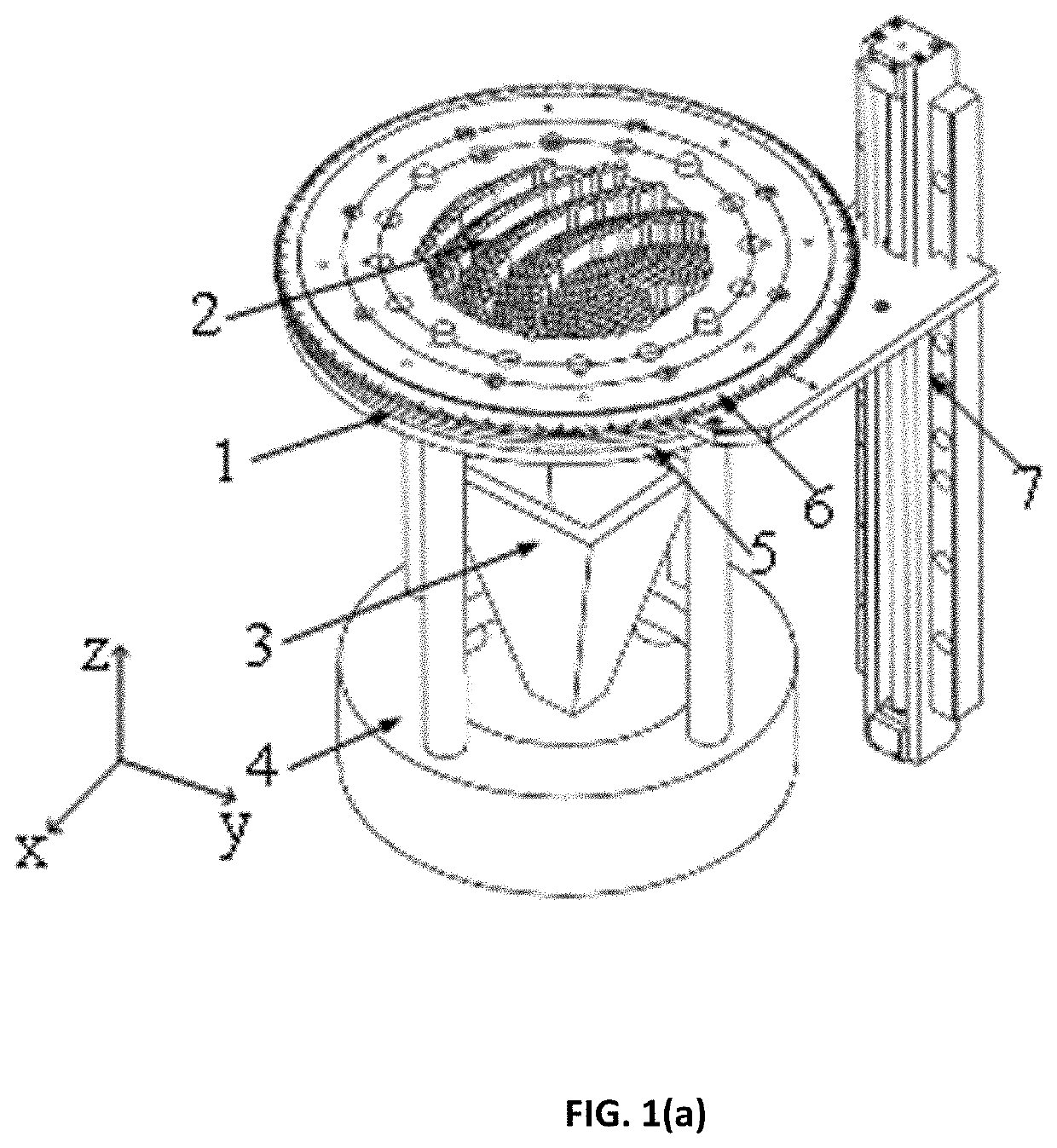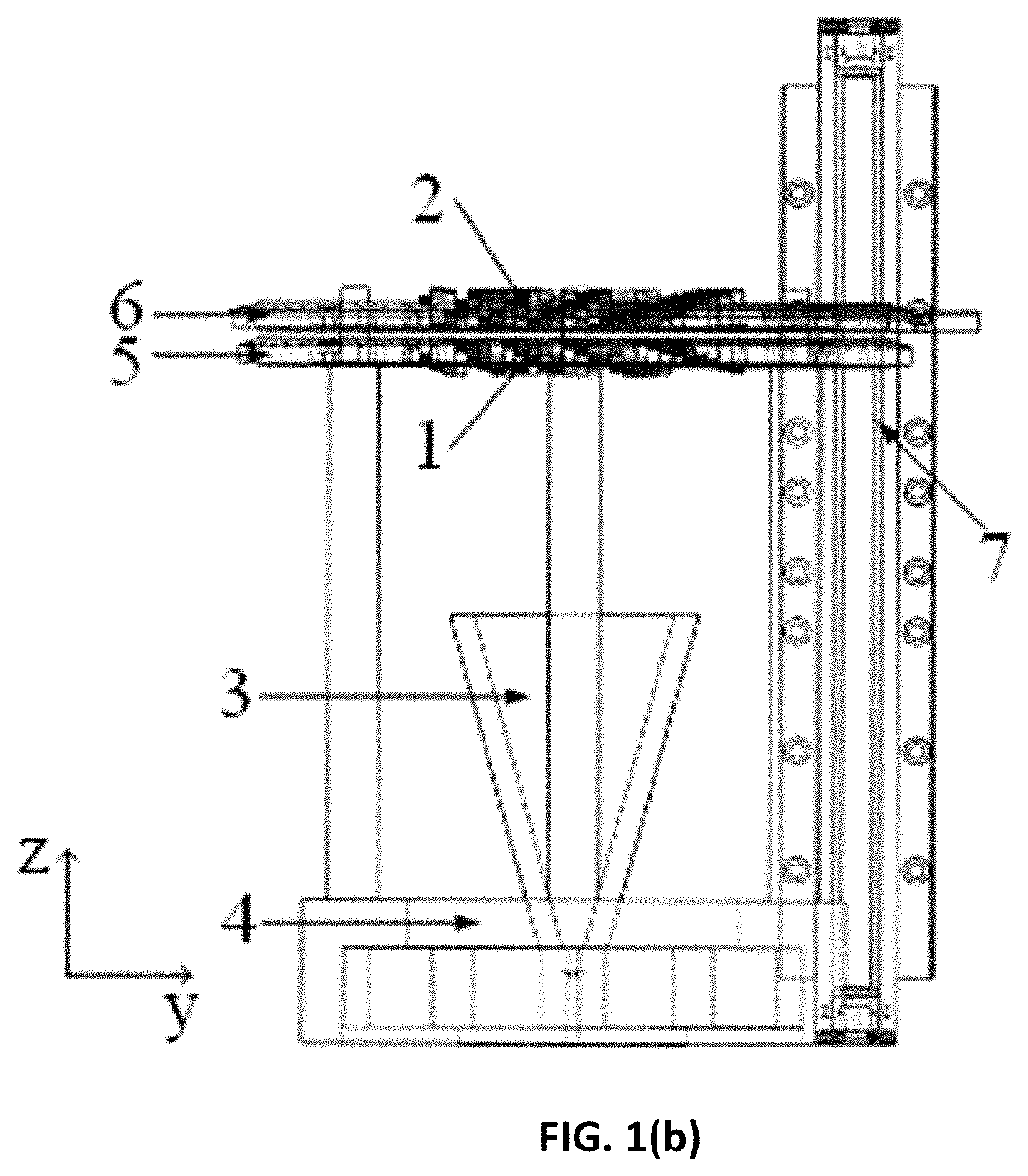3-d focus-steering lens antenna
a focus steering lens and antenna technology, applied in the field of focusing antennas, can solve the problems of limited field of view, unwieldy system, slowness, etc., and achieve the effects of reducing undesired interference from neighboring structures, fast imaging, and increasing system dynamic range and signal-to-noise ratio
- Summary
- Abstract
- Description
- Claims
- Application Information
AI Technical Summary
Benefits of technology
Problems solved by technology
Method used
Image
Examples
example 1
Metalens Design:
[0044]Design of Metalens #1 (DDL 1)
[0045]The schematic of Metalens #1 (DDL 1) and its interaction with incident radiation is depicted in FIG. 13(b). A linearly polarized standard pyramid horn (Millitech SGH-03) with a gain of 23 dBi at 0.3 THz is adopted as the feed. The origin of the global coordinate system OG is located at the phase center of the feed horn. The distance between the phase center of the feed horn and Metalens #1 is set as f1=24 mm to provide a proper illumination taper on the aperture of the metalens. Metalens #1 is aimed at transforming the spherical phase front from the phase center of the feed source into a titled plane wave phase front above the aperture of Metalens #1 as shown in FIG. 13(b). The required phase retardation profile φ(x, y) of Metalens #1 is given by:
φ(x,y)=2πλ0[x2+y2+f12-sinθG(xcosφG+ysinφG)](1)
where (x, y) are the global coordinates of each dielectric post, and (θG=20°, φG=0°) is the direction of the transmitted pla...
example 2
Fabrication and Experimental Verification
[0061]Based on the above design a prototype of the 3D focus-steering all-dielectric terahertz metalens was fabricated. 3D printing technology was used to manufacture the two dielectric metasurfaces aiming at simplifying the fabrication process and reduce the cost. FIG. 14(a) shows the photograph of the 3D printed terahertz metalenses. A good profile of the 3D printed metalens is observed. Holes at an angular spacing of 22.5° on the periphery of the metalenses are used for alignment and assembly purpose. A terahertz planar near-field scanning measurement setup was built to measure the performance of the 3D printed focus-steering metalens. A pair of frequency extenders (OML V03VNA2-T / R) is used to extend the operating frequency of the vector network analyzer (Agilent N5245A) up to 220-325 GHz. A pair of DC power sources is utilized as the power supply for the two OML extenders. One extender on a 3-axis translational stage is used to measure the...
PUM
 Login to View More
Login to View More Abstract
Description
Claims
Application Information
 Login to View More
Login to View More - R&D
- Intellectual Property
- Life Sciences
- Materials
- Tech Scout
- Unparalleled Data Quality
- Higher Quality Content
- 60% Fewer Hallucinations
Browse by: Latest US Patents, China's latest patents, Technical Efficacy Thesaurus, Application Domain, Technology Topic, Popular Technical Reports.
© 2025 PatSnap. All rights reserved.Legal|Privacy policy|Modern Slavery Act Transparency Statement|Sitemap|About US| Contact US: help@patsnap.com



